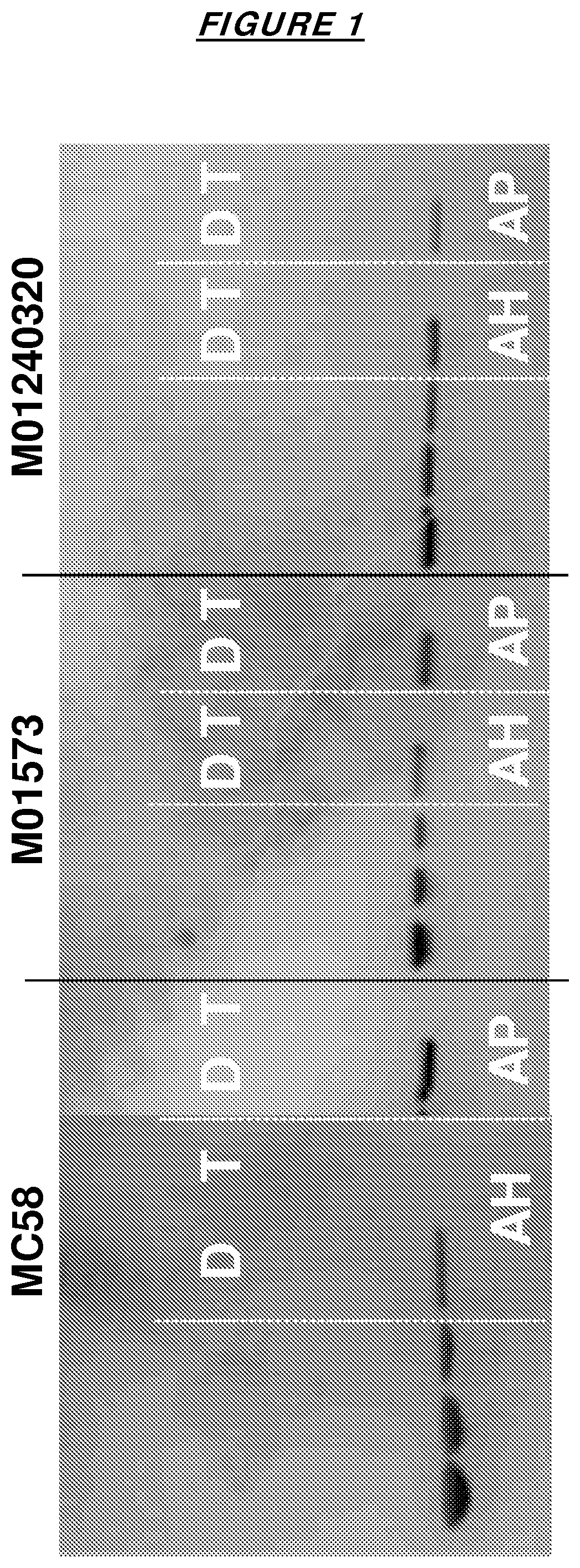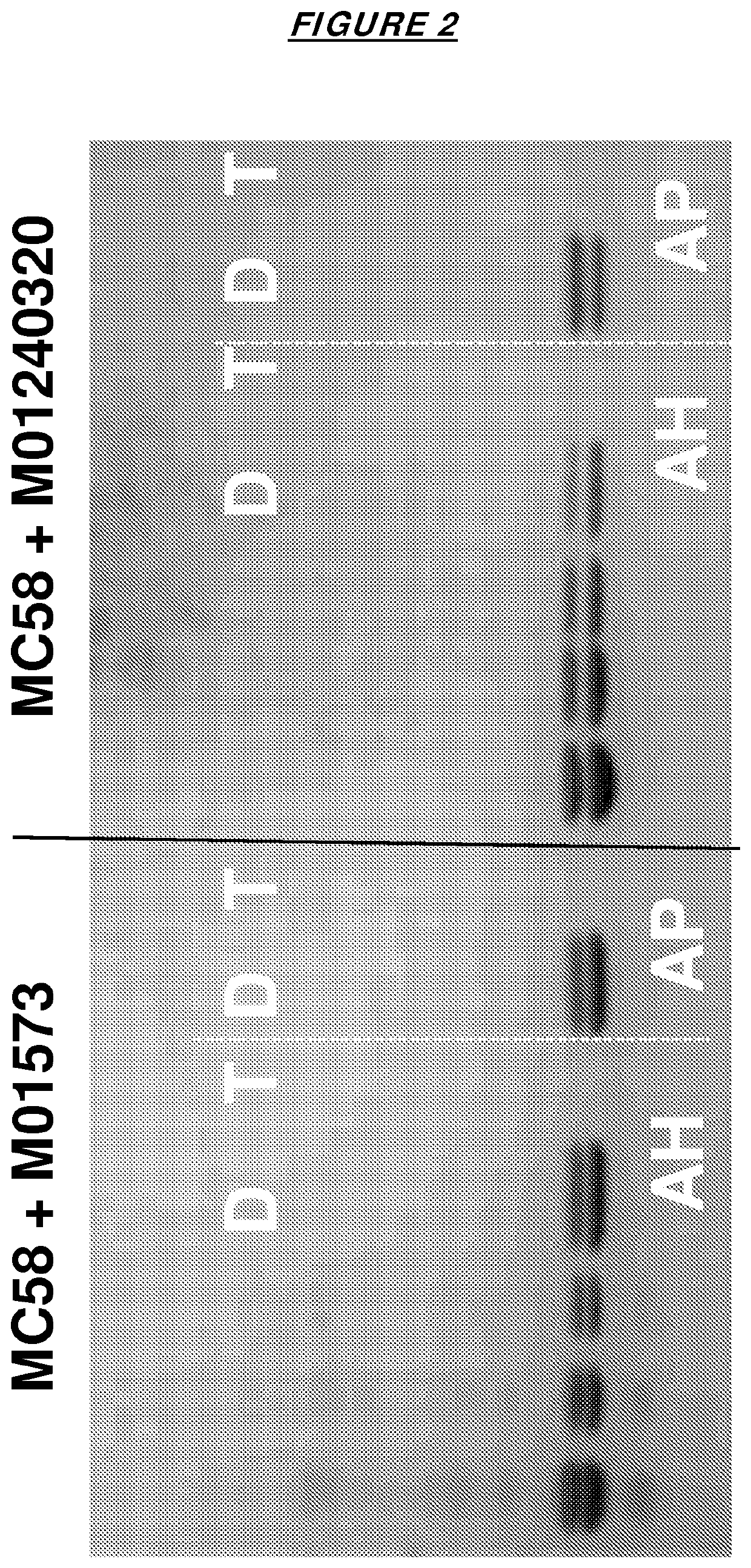Adjuvanted combinations of meningococcal factor H binding proteins
a technology of meningococcal factor and binding protein, which is applied in the field of adjuvanting combinations of meningococcal factor h binding proteins, can solve the problems that the serum raised against the m01573 sequence offers poor protection against the mc58 strain, and achieves the effect of reducing the chain length of the saccharide, reducing the optimum chain length, and reducing the chain length
- Summary
- Abstract
- Description
- Claims
- Application Information
AI Technical Summary
Benefits of technology
Problems solved by technology
Method used
Image
Examples
Embodiment Construction
[0139]Three fHbp proteins were used, representing the following strains and fHbp families:
[0140]
StrainMC58M01573M01240320fHbp familyIIIIISEQ ID NO1 / 264 / 236 / 25
[0141]These were tested as monovalent vaccines or as bivalent vaccines (either as MC58+M01573 or MC58+M01240320).
[0142]The antigens were adsorbed to an aluminium hydroxide adjuvant (AH) or to an aluminium phosphate adjuvant (AP). FIG. 1 confirms that the individual fHbp antigens adsorbed well to both adjuvants, and could be desorbed intact. FIG. 2 shows that this result was also seen with the bivalent mixtures.
[0143]These monovalent and bivalent vaccines were also used to immunise mice and the resulting sera were tested for bactericidal activity against various meningococcal strains. The following table shows results against 2 strains from each of fHbp families I, II and III, where a “+” indicates a bactericidal titre of 128 or more:
[0144]
MC58 +MC58 +Strain nameMC58M01573MO1240320M01573M01240320(fHbp family)AHAPAHAPAHAPAHAPAHAP...
PUM
| Property | Measurement | Unit |
|---|---|---|
| molar ratio | aaaaa | aaaaa |
| molar ratio | aaaaa | aaaaa |
| molar ratio | aaaaa | aaaaa |
Abstract
Description
Claims
Application Information
 Login to View More
Login to View More - R&D
- Intellectual Property
- Life Sciences
- Materials
- Tech Scout
- Unparalleled Data Quality
- Higher Quality Content
- 60% Fewer Hallucinations
Browse by: Latest US Patents, China's latest patents, Technical Efficacy Thesaurus, Application Domain, Technology Topic, Popular Technical Reports.
© 2025 PatSnap. All rights reserved.Legal|Privacy policy|Modern Slavery Act Transparency Statement|Sitemap|About US| Contact US: help@patsnap.com


